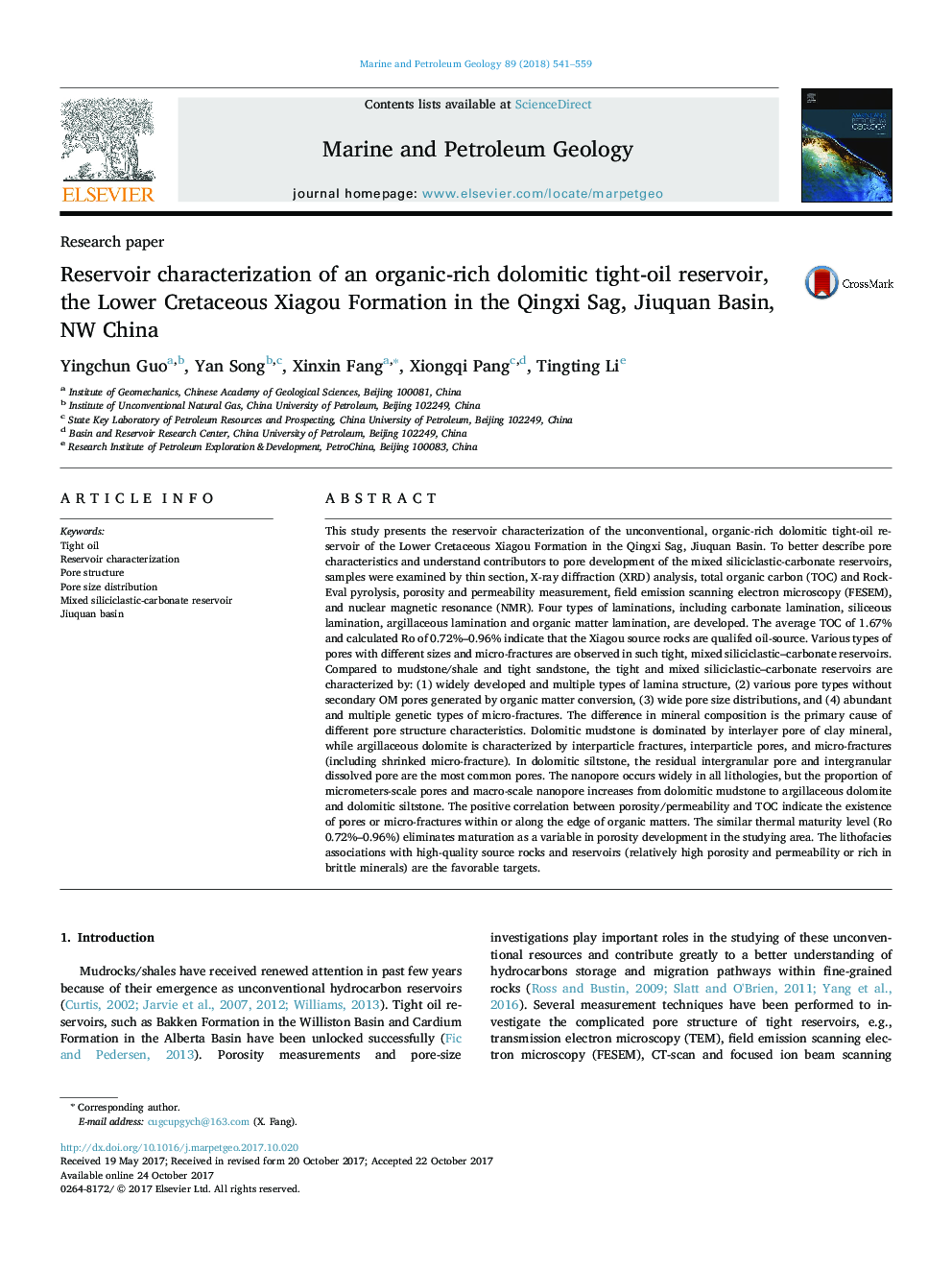| کد مقاله | کد نشریه | سال انتشار | مقاله انگلیسی | نسخه تمام متن |
|---|---|---|---|---|
| 8909257 | 1637136 | 2018 | 19 صفحه PDF | دانلود رایگان |
عنوان انگلیسی مقاله ISI
Reservoir characterization of an organic-rich dolomitic tight-oil reservoir, the Lower Cretaceous Xiagou Formation in the Qingxi Sag, Jiuquan Basin, NW China
دانلود مقاله + سفارش ترجمه
دانلود مقاله ISI انگلیسی
رایگان برای ایرانیان
کلمات کلیدی
موضوعات مرتبط
مهندسی و علوم پایه
علوم زمین و سیارات
زمین شناسی اقتصادی
پیش نمایش صفحه اول مقاله

چکیده انگلیسی
This study presents the reservoir characterization of the unconventional, organic-rich dolomitic tight-oil reservoir of the Lower Cretaceous Xiagou Formation in the Qingxi Sag, Jiuquan Basin. To better describe pore characteristics and understand contributors to pore development of the mixed siliciclastic-carbonate reservoirs, samples were examined by thin section, X-ray diffraction (XRD) analysis, total organic carbon (TOC) and Rock-Eval pyrolysis, porosity and permeability measurement, field emission scanning electron microscopy (FESEM), and nuclear magnetic resonance (NMR). Four types of laminations, including carbonate lamination, siliceous lamination, argillaceous lamination and organic matter lamination, are developed. The average TOC of 1.67% and calculated Ro of 0.72%-0.96% indicate that the Xiagou source rocks are qualifed oil-source. Various types of pores with different sizes and micro-fractures are observed in such tight, mixed siliciclastic-carbonate reservoirs. Compared to mudstone/shale and tight sandstone, the tight and mixed siliciclastic-carbonate reservoirs are characterized by: (1) widely developed and multiple types of lamina structure, (2) various pore types without secondary OM pores generated by organic matter conversion, (3) wide pore size distributions, and (4) abundant and multiple genetic types of micro-fractures. The difference in mineral composition is the primary cause of different pore structure characteristics. Dolomitic mudstone is dominated by interlayer pore of clay mineral, while argillaceous dolomite is characterized by interparticle fractures, interparticle pores, and micro-fractures (including shrinked micro-fracture). In dolomitic siltstone, the residual intergranular pore and intergranular dissolved pore are the most common pores. The nanopore occurs widely in all lithologies, but the proportion of micrometers-scale pores and macro-scale nanopore increases from dolomitic mudstone to argillaceous dolomite and dolomitic siltstone. The positive correlation between porosity/permeability and TOC indicate the existence of pores or micro-fractures within or along the edge of organic matters. The similar thermal maturity level (Ro 0.72%-0.96%) eliminates maturation as a variable in porosity development in the studying area. The lithofacies associations with high-quality source rocks and reservoirs (relatively high porosity and permeability or rich in brittle minerals) are the favorable targets.
ناشر
Database: Elsevier - ScienceDirect (ساینس دایرکت)
Journal: Marine and Petroleum Geology - Volume 89, Part 3, January 2018, Pages 541-559
Journal: Marine and Petroleum Geology - Volume 89, Part 3, January 2018, Pages 541-559
نویسندگان
Yingchun Guo, Yan Song, Xinxin Fang, Xiongqi Pang, Tingting Li,